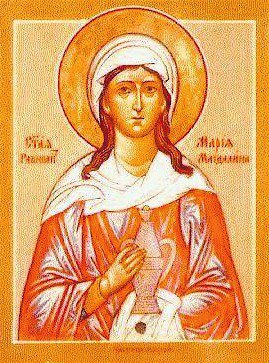
This claim is the backbone of Brown's novel. The The Da Vinci Code claims that Jesus and Mary Magdalene were married, that they had children, and that their descendants included a line of kings in France, as well as some of the main characters in Brown's novel.
Despite Brown's claims, however, there are no historical documents that claim that Jesus was married - not even the "Gnostic gospels" that Brown mentions in his novel. (The Gnostic texts were written a century or more after the New Testament. The Gnostic texts borrow some names and ideas from Christianity but the texts are not Christian and they are not used by Christians.)
The only specific evidence that Brown cites to support this claim of a marriage is a passage from one of the Gnostic texts - the so-called "gospel of Phillip." And that lone piece of evidence actually undermines Brown's claim.
The main problem with the "Phillip" passage is that it clearly shows that even in the context of this Gnostic text, Mary Magdalene and Jesus could not have been married. If you read the passage, as shown on page 246 of the hardcopy version of The Da Vinci Code, you'll see for yourself:
"the companion of the Savior is Mary Magdalene. Christ loved her more than all the disciples and used to kiss her often on her mouth. The rest of the disciples were offended by it and expressed disapproval. They said to him, 'Why do you love her more than all of us?'"
If, in the context of this Gnostic text, the Savior and Magdalene were supposedly married, then why would the disciples bother to ask why he loved her more than them?
Can you imagine a scenario in which a group of men would ask a married man, "Why do you love your wife more than us? And, for that matter, why do you keep kissing your wife?" Such a question wouldn't make any sense. In fact, it wouldn't make any sense even if the two were merely engaged or simply dating.
The only way that the question would make sense in the Gnostic text is if there was no reason for Mary Magdalene to be treated any differently than the men. And the only way that this could be true is if Mary Magdalene was supposed to have the exact same relationship with the "Savior" as did the "other disciples." In other words, only if she was not married, or otherwise intimately involved.
There are other problems with Brown's marriage theory:
• Despite Brown's "translation" of that key passage from the Gnostic gospel of Phillip, the word "mouth" doesn't actually appear in the original text. According to page 49 of The Da Vinci Deception, by Erwin W. Lutzer: "You should know that because of the poor quality of the papyrus, a word or two is missing in the original. The text reads, 'Jesus kissed her often on the [blank].' So scholars fill in the blank with the word mouth, face, or forehead, etc. Actually, for all we know the text might have said 'the hand' or even 'the cheek' since the statement implies that he also kissed his other students – presumably on the cheek as is still done in the Middle East."
• Brown claims that the Aramaic word for "companion" literally meant "spouse." That is not true according to various Aramaic scholars. And, even more importantly, the Gnostic gospel of Phillip was not written in Aramaic. It was written in Coptic.
• None of the Gnostic gospels ever claimed that Jesus and Mary Magdalene were married. Even the so-called Gnostic gospel of Mary Magdalene fails to makes such a claim.
• Finally, consider this from page 41 of The Truth Behind The Da Vinci Code, by Richard Abanes, in regards to the Gnostic Phillip text: Ironically, if this text does anything, it cuts out the very heart of any assertion about Mary and Jesus being wed. It does so by adhering to one of the basic tenets of ancient Gnosticism, which declares that all physical matter was inherently evil. Consequently, sexual relations were intrinsically debasing! The Gospel of Phillip goes so far as to say that marital relations defile a
No comments:
Post a Comment